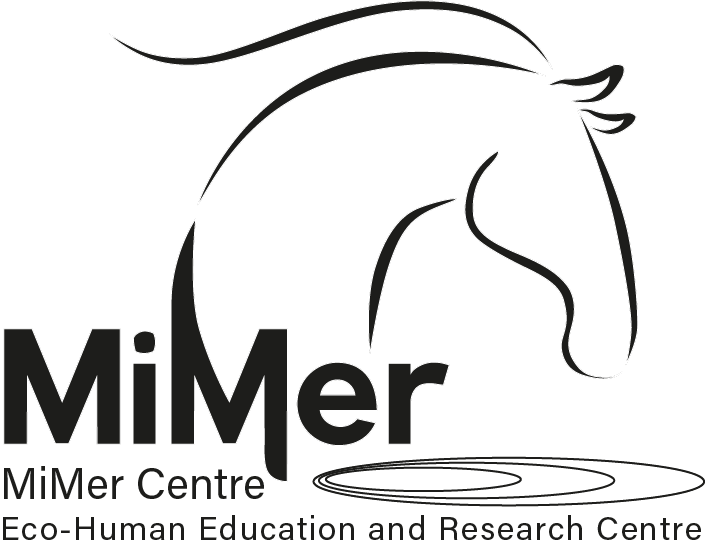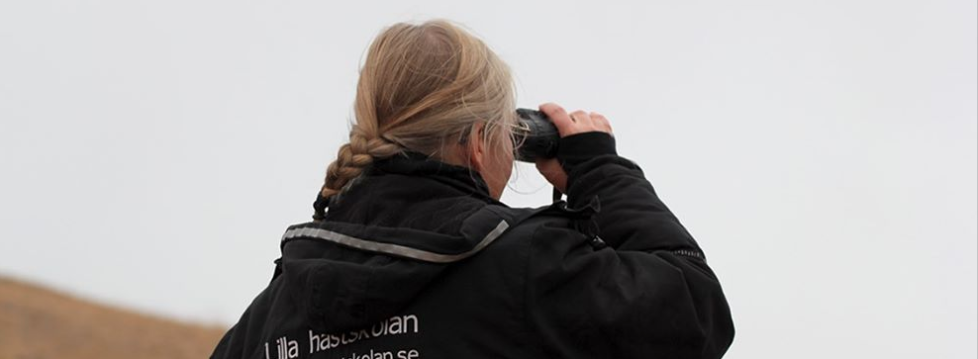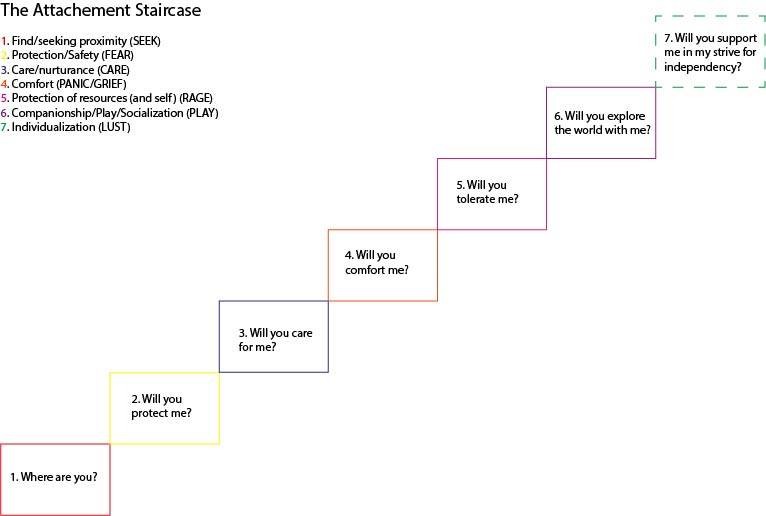WHERE ARE YOU?
How many Attachment systems do we have?
Bowlby's Attachment theory outlines one Attachment system, with variations on how we attach dependent on how well the relationship between the mother (primary caretaker) and infant functions and develops.
Then I started to read Trevarthen and his work with infants and mothers (primary caretakers) – and how he sees our human development in our attachment systems as distinctly 2-folded with one system for:
1. Care, protection, and nurturance
And another for:
2. Companionship, play, exploration, socialization (social learning/creativity/taking part in culture)
Now I am reading Panksepp's work on emotions and emotional systems (and Porge's Polyvagal theory). And I see how they come to the same questions, as Bowlby and Trevarthen, and with them, many others, about what it is to be human, to develop into a "functional human" (to oneself and others) and what happens when we do not get the best start in life, as humans, and how that possibly can be repaired, when we have missed out on different developmental stages.
Putting all these theories together (and some more) – I am starting to wonder – maybe there are as many attachment systems as there are primary emotional systems? What happens if we pair these guys work up together? Will we see more – than when we only look through one of their theoretical lenses, only apply one of their theories as a model to explain "human development"? What happens if we try to integrate them? Make them into a more multi-layered and complex grid? What will we see?
The questions I have mostly come from reading the theories and contrast then to my own experiences. I did not get a very good start in life when it comes to good attachments with my primary caretakers. I know how that can mess life up. So, yes, I am driven by a fair amount of "me-search" in this – which – I think – can be okay. As long as I am aware of what I say and conclude can be emotionally/personally tainted. But my own experiences are not only a handicap here – they have also made me ask a lot of questions – and I am trying to sort them out. Not that I think I will find the answers to the question of "me" in these theories – but I use them my readings of them as steppingstones, they give me new ideas, angles, and inspiration. Nor do I believe any of them will be/become THE model – THE scientific breakthrough that explains human development, human nature or human trauma or how to repair human trauma. They are all – perspectives, parts of the picture. I see myself as a puzzle person – who is looking at all these puzzle pieces from different puzzle boxes and wondering if they maybe are part of the same 3D puzzle? Then I experiment – test it on myself and juggle it all in my mind - and outcomes ideas like the one with an Attachment Staircase.
First, I wondered – why does the order of Bowlby's attachment system most often start with care and has safety/protection secondly? If I am an infant – how can I receive care – if I am not first protected? It would make more sense, from a survival perspective, to first look for protection.
But then Sarah Schlote posted something that made me think in one more step, she pointed out that there possibly is one more stress (and or trauma response – those are not equivalent to each other) – that she called FIND (besides the FIGHT, FLIGHT, FREEZE & FAWN(PLEASE/UPPEASE). I interpreted that – thinking about Emily Kieson's work on affiliation in horses – how she too connects that into the – "seek proximity" system – which she sees a lot of in horses and how they maintain bonding and seek/provide safety with/to each other. FIND – seek proximity looks like it can be part of the same system? Panksepp's SEEKING system?
So I came up with a set of questions that I put into a staircase:
And then the first "question" would not be – will you care for me? Neither would it be, will you protect me? It would be – Where are you? The stress/trauma response FIND (Seek Proximity) is probably the first to show up when we feel threatened. If we can find someone who grants us proximity, that would instantly enhance our survival rate. It is a very primal survival strategy that also Lucy Rees has been studying in wild horses in Venezuela, which made her come up with her 3 step theory of how wild horses move together in big herds to protect themselves and each other. That is the foundation of her theory of synchronization, with the rules: do not collide, do like the one closest to you do, move in the same speed and direction. If you. as a horse in a big herd, follow those basic rules, then you are protected by not being alone – there is safety in numbers. As a human, being two is better than being one, especially if you are a child and the second human is much bigger than you – that adult person is likely stronger and also hopefully more resourceful and experienced than you. What Lucy saw in wild herds in Venezuela, Emily sees in slightly more domesticated horses in Oklahoma. Can we see it, humans, too? When I think of my own reactions when frightened – I know what pops up in my brain – and that is the question – where are you? It is an old rest of my defense systems.
And since most of our knowledge about human emotions comes from studies on "animal models" – and we know that these primary emotional systems – we share as mammals – it makes sense to learn from what other species show us, when we study emotions and emotional systems.
There is also research on human infants and how they come together when there are signs of distress. One of the criteria for secure attachment in the" strange situation test" by Ainsworth – is that once the mother enters the room again, the toddler is supposed to seek proximity as a first sign. If the mother does not seek the infant – and the infant does not seek the mother after distress, if no seeking of proximity takes place – that is instead a potential sign of a problematic attachment pattern between the pair.
Paring these different researchers observations and results with Panksepp's claim that the SEEKING system is working together with, and is foundational to all the other primary emotional systems (FEAR, RAGE, LUST, CARE, PANIC/GRIEF, PLAY), it seems that seeking proximity – is primary to seeking protection, care, comfort or tolerance of self. Because in separating out "seeking proximity" as its own attachment behavior – one sees that even if that need of proximity is reached, it does not necessarily grant the other ones – one can be in proximity to someone – but not necessarily get protection, care, comfort or tolerance (acceptance) of self. If it only is – only contains physical proximity – it would still enhance your survival rate. To be alone, left to yourself – is a more hopeless stage to be in – than to be in any other stage. All the other stages inherently hold the possibility to all the other systems, but if you do not reach proximity – all the other attachment systems will fail. Seen from a survival point of view – which is where we often end up when reacting to something in a stressful or trauma-triggering situation, seeking proximity - even to someone you are afraid of, will increase your survival chances.
It also seems VERY important in which order these attachment systems are put into place, are introduced – so it is not only a problem if one is missing or dysfunctional. If one is introduced/is given too late, or too early – it will also be detrimental to the infant's development – the attachment systems are supposed to "show up" be grown through – in a certain order – still there is some parallel, simultaneous development taking place, of course, it is an overlapping system.
I was unsure how to fit in the LUST system in my staircase – I do believe it is an attachment system – existing in childhood, meant to come more into play from earliest in adolescence (abstractly) – to grow into a congruent and more concrete mean of receiving and giving adult consensual affection. Neither did I find fitting in the RAGE system very easy, since it seems almost to underlay the whole attachment system as the seeking system does. It seems the RAGE system is a defense system of access to the whole attachment system and one's own part in it- The RAGE system seems to be a protection system of all the resources in the attachment system, including self/oneself. So maybe it is wrongly placed?
If we think these systems of attachment are correlated to some degree, with our primary emotional systems, it also makes sense to then look at our defense/stress response systems – do they seem to correlate as well? – FIGHT, FLIGHT, FREEZE, FAWN (PLEASE/UPPEASE), FIND – and the latest that I read about and that Nancy Parish Plass sent me a note on – the FREED response ( original article here: https://www.facebook.com/SageHayes22/posts/10158486213322275) – Maybe the FREED response is the last, the 7th step? Tagging along with the individualization phase last steps? Into being a grown-up – where you explore and grow your own version of the LUST system?
I don't know. I am not there yet. I will stay sorting my pieces in the puzzle to explore them some more. Maybe they do fit in? Maybe I am seeing connections that aren't there? But by looking at them, re-sorting them - I get new information. When they are paired in different ways - new possible answers arise (and even more questions...).
I am theorizing. My brain likes it. It keeps me grounded and distanced enough to look at my own emotional difficulties. In fact, my own difficulties from having grown up the way I have becomes an asset, if recognized and monitored. A big thank you to Ilka Parent and Cathy O'Donnell for keeping on asking me questions and offering other perspectives to see things from.
If someone needs the references behind this thinking, ask me - and I will put them here.
Text and picture are copyright protected ©Katarina Lundgren 2020
When you subscribe to the blog, we will send you an e-mail when there are new updates on the site so you wouldn't miss them.



Comments